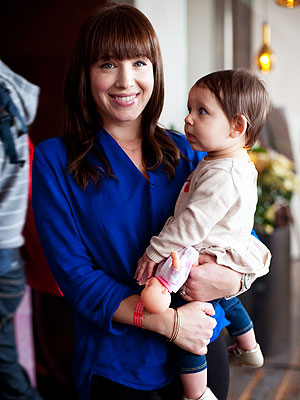LOS ANGELES (AP) — It was too expensive. It lacked editorial focus. And for a digital publication, it was strangely cut off from the Internet. That’s the obituary being written in real time through posts, tweets and online chats about The Daily, the first-of-its-kind iPad newspaper that is being shut down this month.
Rupert Murdoch‘s News Corp. said Monday that The Daily will publish its final issue on Dec. 15, less than two years after its January 2011 launch. The app has already been removed from Apple’s iTunes, where it once received lukewarm ratings.
The Daily had roughly 100,000 subscribers who paid either 99 cents a week or $ 40 a year for its daily download of journalism tailored for touch screens. But that wasn’t enough to sustain some 100 employees and millions of dollars in losses since its launch. At the time of its debut, News Corp. said The Daily’s operating costs would amount to about half a million dollars a week, or around $ 26 million a year.
When News Corp. launched The Daily, it was touted as a bold experiment in new media. The company hired top-name journalists from other publications, such as the New York Post’s former Page Six editor, Richard Johnson, and said it poured $ 30 million into the newspaper’s launch. Now, the company is acknowledging that The Daily no longer has a place at News Corp., which is being split in two to separate its publishing enterprises from its TV and movie businesses.
Murdoch said in a statement that News Corp. “could not find a large enough audience quickly enough to convince us the business model was sustainable in the long-term.” Some employees are being hired in other parts of the company.
Critics say The Daily’s day-to-day mix of news, opinion and info-graphics wasn’t that different from content available for free on the Internet. And despite a high-profile launch that drew lots of media attention, the publication failed to build a distinctive brand. There was no ad campaign touting its coverage and stories weren’t accessible to non-subscribers, so it didn’t benefit from buzz that comes from social networks like Twitter and Facebook.
Trevor Butterworth, who wrote a weekly column for The Daily called “The Information Society,” says the disconnect between the app and the broader Internet curtailed its reach. He was laid off in July when the publication shrank from 170 workers to about 120. As part of the purge, The Daily cut its dedicated opinion section and dropped sports coverage in favor of using a feed from its News Corp. sister outfit, Fox Sports.
“Stories weren’t widely shared or widely known,” says Butterworth. “It felt like I was writing into the void.”
When it launched, The Daily was meant to take advantage of the explosion of tablet computer sales, and the notion that people generally read on them in the morning or evening, like a magazine.
But each issue came in a giant file — sometimes 1 gigabyte large — and took 10 or 15 minutes to download over a broadband connection, which is unheard of for news apps, says Matt Haughey, the founder of MetaFilter.com, one of the first community blogs on the Internet.
Because the stories weren’t linkable, The Daily didn’t benefit from new Internet traffic that would have come from content aggregators like Flipboard and Tumblr.
“They ignored the obvious, which was the Web,” Haughey says. Although many people are foregoing buying a laptop for the lightweight convenience of a tablet, the day hasn’t arrived yet when all online access will come through apps rather than the Web. “Maybe in five or 10 years, the Web will be less important,” he says. “For now it seems like they were missing out.”
It may also have been a problem that News Corp. launched The Daily from scratch into an environment where readers tend to gravitate toward trusted sources and established brands. According to a 2011 Pew Research Center survey, 84 percent of mobile device users said a news app’s brand was a major factor in deciding whether to download it.
One of the intangible challenges The Daily had was standing out in a sea of online journalism, both paid and free. Some national newspapers, such as The New York Times and The Wall Street Journal, have carved out a niche with informed coverage of sometimes complex topics and have gained paying digital subscribers by limiting the number of free articles they offer online.
Gannett Co., which publishes USA Today and about 80 other newspapers, has succeeded in raising circulation revenue at local papers by putting up so-called online “pay walls,” taking advantage of the fact that there are few alternative sources of coverage for certain communities.
Without a unique coverage niche or a local monopoly, The Daily was caught between two worlds.
By being digital-only, the publication didn’t have a defined coverage area. It was “in competition with everybody and everything,” says Joshua Benton, director of the Nieman Journalism Lab at Harvard University. Yet it failed to carve out its own niche in that larger universe, he says.
“Its lack of editorial focus played a role,” Benton notes. “It was sort of a pleasant, middle-brow, slightly tabloidy mix of news and features. And there’s lots of that available for free online. I would imagine if ‘The Daily’ were starting again now, they would invest more in establishing their brand identity early on.”
Gadgets News Headlines – Yahoo! News























